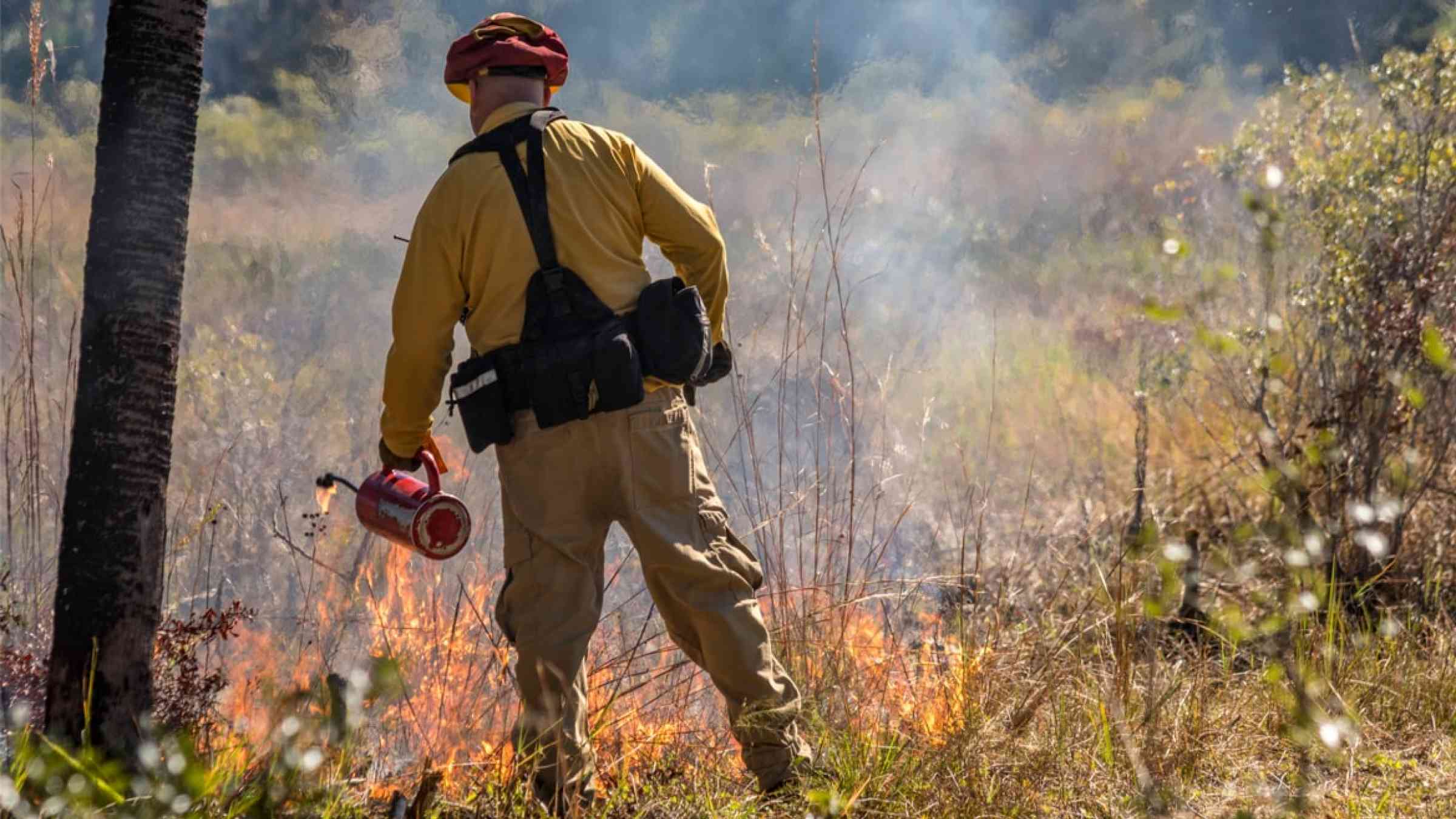Please help us improve PreventionWeb by taking this brief survey. Your input will allow us to better serve the needs of the DRR community.
‘Learn to live with fire’: a Californian firefighter’s plea

LOS ANGELES – Will Harling has lived with fire his entire life - his first memory is a forest fire encroaching on his family’s cabin in the remote community of Forks on Salmon, in California, where a population of 150 is spread over hundreds of miles of wilderness.
“Every year we wait for that fire that’s going to burn everything down,” he said, pointing out that his patch of Northern California - home to the world’s tallest living trees - has the highest rate of fires caused by people in the state.
That fire could soon arrive.
Raging less than 120 miles (193.12 km) away from his home, California's second-largest wildfire on record, known as the Dixie fire, is displacing thousands of northern California residents.
This year's highly incendiary wildfire season, which experts say is symptomatic of climate change, has made the work of experienced firefighters like Harling existential.
Small settlements like the Gold Rush town of Greenville have been entirely engulfed by the Dixie fire and left unrecognizable.
The wildfire crisis escalated on Wednesday as strong winds drove flames from a separate, smaller blaze into a rural mountain community and prompted widespread power shutoffs.
“There’s no human force that can stop fires now. We’re entering one of the driest centuries of the last 5,000 years.”
— Thomson Reuters Foundation News (@TRF_Stories) August 18, 2021
As #climatechange drives worsening wildfires, California firefighter Will Harling says humans will have to learn to live with fire https://t.co/Y6vJgDmLLs pic.twitter.com/0u8pJf8FJI
Harling says humans will have to learn to live with fire.
“There’s no human force that can stop fires now. Since the early 70s the climate has been changing and we are entering one of the driest centuries of the last 5,000 years,” he said.
From his first exposure to firefighting as a young man during his college years, Harlin became a critic of how fires are fought in California: from the reliance on prison labor, to how the logging industry is allowed to clear cut land in his community in the aftermath of a blaze.
“My first time fighting fire I was 18 or 19 - it was all a big adrenaline rush, seeing this go up in flames,” he said.
“But it was also brutal: I was working alongside the prison crews - incarcerated people fighting fires for just 1 dollar a day.”
“We weren’t allowed to talk to them - and they were thrown in all the most dangerous situations,” he said.
He now runs the Mid Klamath Watershed Council, a non-profit that promotes environmentally-conscious land management, and he works as a firefighter for the local Karuk Tribe, though he prefers to call himself a “fire lighter,” because he’s a champion of controlled burns.
Allowing smaller fires on the landscape can tamp down on the most damaging fires that threaten homes and lives, by cleansing trees, brush, and other fuel that could feed a massive blaze.
On August 10, the U.S Forest Service announced it would not be allowing these kinds of controlled burns this summer, due to strained resources.
“I’ve spent the last 20 years trying to turn the aircraft carrier around... trying to figure out how we can live with fire,” he said, as his radio squawked in the background, keeping him abreast of a nearby wildfire that had prompted an evacuation warning earlier in the week.
“I've never been a full-on regular firefighter,” he said. “I don’t want to be beholden to that machine.”
The only hope Harling sees is to embrace what he says are the traditional ways that native tribes in the area have dealt with fires for centuries: allowing for controlled burns throughout the year, and allowing smaller fires that ignite to burn out.
As things stand, the massive wildfire season not only threatens to burn down his community, it also poses a risk to the health of his family.
“We’ve been inhaling smoke that should have burned slowly over the past 100 years, it’s all concentrated now,” he said.
“We have to be playing both offensive and defense - and that means we need good fire on the ground, so we don’t have bad fire later.”
Explore further
Please note: Content is displayed as last posted by a PreventionWeb community member or editor. The views expressed therein are not necessarily those of UNDRR, PreventionWeb, or its sponsors. See our terms of use
Is this page useful?
Yes No Report an issue on this pageThank you. If you have 2 minutes, we would benefit from additional feedback (link opens in a new window).